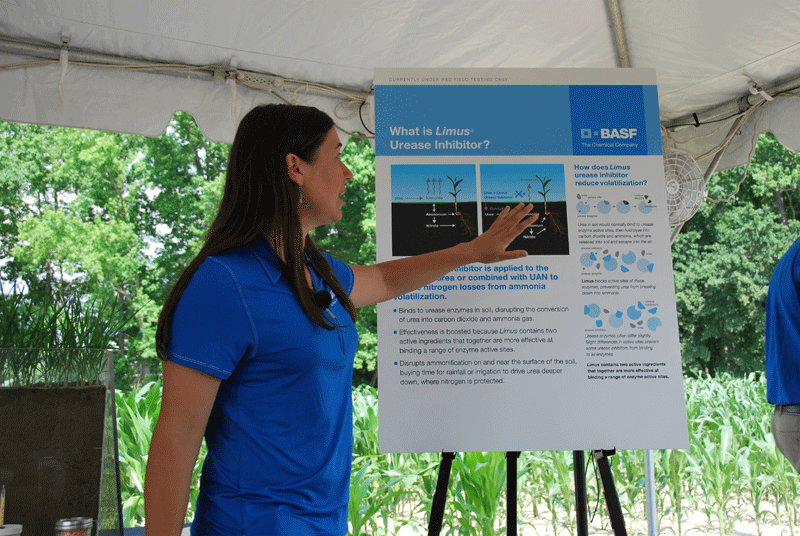Investment in research
BASF’S OUTLOOK FOR AGRICULTURE
CONTINUOUS INNOVATION IS what BASF executives claim is the key to the century of success the company’s Crop Protection division has seen with its inoculants, herbicides, fungicides, and insecticides. Globally, they spend $2 million per day on research related to developing agriculture solutions. For Canadian farmers, that investment can be seen in the three new active ingredients and 10 new uses for BASF products expected to be available by 2016.

NEW PRODUCTS
“The newest launch we’ve had is our new fungicide, Priaxor, for a wide range of crops — corn, soy, row crop. And we will have another formulation of Priaxor DS that will be launched for specialty crops,” says Nevin McDougall, senior vice president of BASF Crop Protection North America. Priaxor® is a fungicide offering multiple modes of action that will be available for sale in Western Canada for the 2015 season for use on canola, pulses, corn, soybeans, and flax.
BASF is also expected to launch a new herbicide. “Weed resistance is an issue and we will have a new formulation of dicamba called Engenia,” says McDougall. “The Engenia brand will be launched here in the next 12 to 24 months and that will be a very good solution for addressing weed resistance in soybeans.”
Under their banner of functional crop care, BASF is also releasing a urease inhibitor, Limus®. This product, which can be used with urea or UAN, enhances nitrogen availability during critical crop growth stages with the goal of providing more consistent yield. Limus is expected to launch in the U.S. in 2015. Testing and evaluation for release in Canada is currently underway.
RENEWED FOCUS ON FARMERS
In addition to developing new chemistry, BASF has spent the past few years developing its relationship with growers.
“There was a change in mindset in our own organization to open up, to listen, and connect to farmers which was not always our direction in the past”, says Markus Heldt, president of BASF Crop Protection. “The early involvement of the farmer in the innovation process — it’s not only about using a herbicide or a fungicide, it’s about their needs, how can we help them better manage their crop, how can we help them become more profitable and more efficient in their farm operation. And that’s, I think, where we are approaching the customer with a very different approach than just offering them a new fungicide or a new herbicide.”
In order to facilitate that connection with farmers, BASF has hired 150 in-field innovation specialists, who are agronomic experts, to support farmers and retailers. According to McDougall, this helps them understand how best to support grower decisions and help them optimize and maximize their yields.
CONTINUED INVESTMENT
Despite the challenging economic climate within North America, BASF is forecasting a two to three percent market growth by 2020 to be achieved through growing their advisory programs and services and offering more integrated solutions with their products. They are investing $270 million in expanding their production facilities for key herbicides, including dicamba, at their Beaumont, Texas site, and upgrading production at their Hannibal, Missouri site.
BASF says they will also continue to innovate, utilizing more than 20 research and field testing locations across the U.S. and Canada. This is double the number they had five years ago and includes two facilities in Ontario (Guelph and London) which are used to conduct initial screenings of new active ingredients and help in the development and tailoring of formulations to make sure they are suited to our crops and growing conditions.
“There is a continued demand for plant health, improved disease control, and addressing weed resistance so I think the demand for new technologies to enhance productivity and yield per acre is certainly going to continue due to the competitive nature of the industry,” says McDougall. •





















